Events
| Name | organizer | Where |
|---|---|---|
| MBCC “Doing Business with Mongolia seminar and Christmas Receptiom” Dec 10. 2025 London UK | MBCCI | London UK Goodman LLC |
NEWS
Mongolia issues warning over blizzards www.xinhuanet.com
Mongolia's National Emergency Management Agency (NEMA) has issued a severe weather warning for several regions, predicting strong winds and blizzards to start on Monday night.
The blizzards are expected to impact the western, central, and southern Gobi provinces over the next two days, resulting in poor road visibility and slippery conditions, the NEMA said on Monday, urging citizens, especially nomadic herders and drivers, to exercise caution and take preventive measures against potential disasters.
In addition, more than 60 percent of Mongolia's total territory is already covered in snow, according to the National Agency for Meteorology and Environmental Monitoring.
Mongolia, known for its harsh continental climate, frequently experiences extreme weather throughout the year. As one of the few remaining nomadic societies in the world, the country is particularly vulnerable to abrupt and severe weather events.
The combination of frigid temperatures and unpredictable weather patterns often leads to devastating consequences for both human and animal populations.
In a tragic example of such risks, over 10 people, mainly nomadic herders, lost their lives in November 2023 due to heavy snow and blizzards in the central province of Tuv and the eastern province of Sukhbaatar.
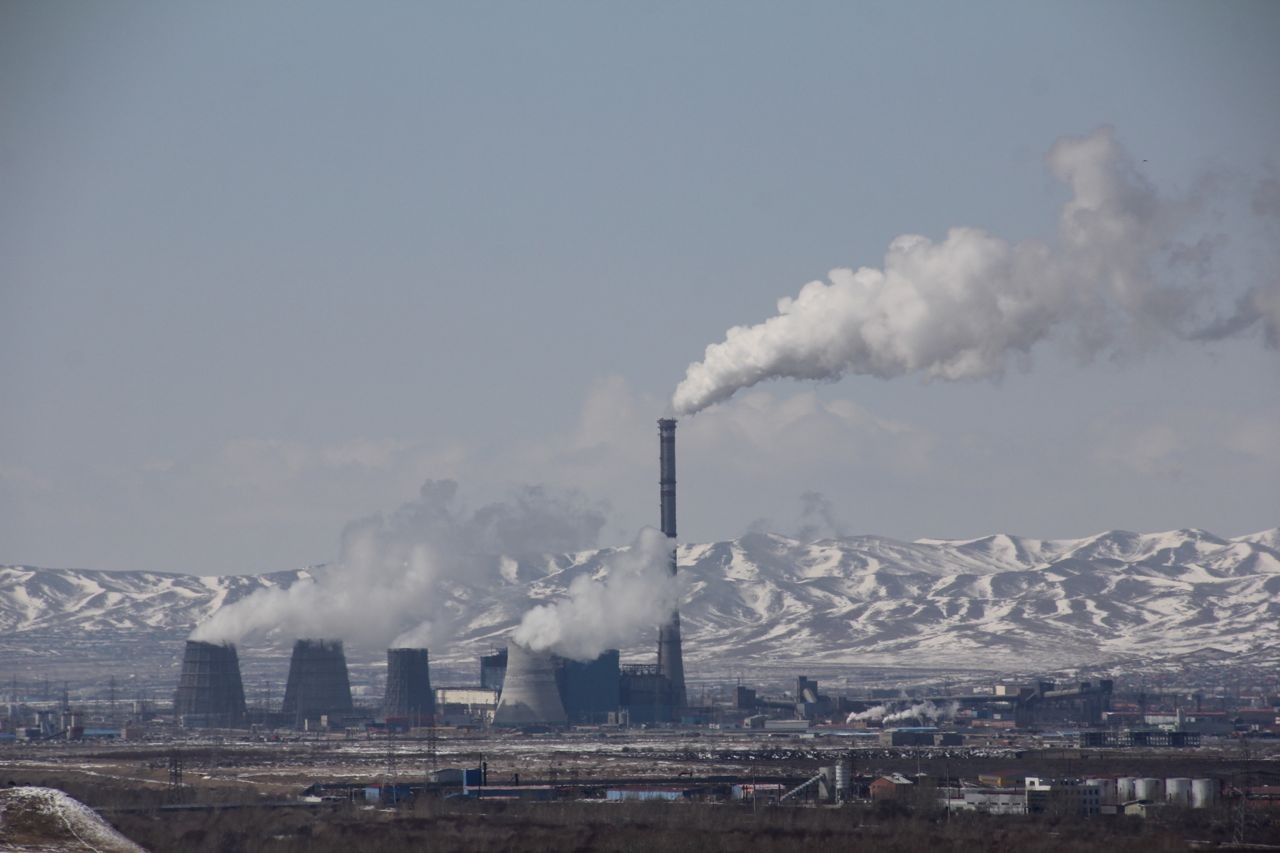
Mongolia's power grid load rises significantly www.xinhuanet.com
Mongolia's electricity consumption has surged significantly during the ongoing cold winter season, the country's Energy Regulatory Commission announced on Monday.
The national power grid reached a peak load of 1,614 megawatts (MW) on Sunday evening, an 18 MW increase compared to the same period last year, the commission said, urging the public to conserve energy.
To mitigate the risk of a complete blackout, Mongolia has been forced to implement power rationing measures. Specifically, Ulan Bator, the capital city, which is home to nearly half of Mongolia's 3.5 million population, has introduced measures to limit power usage by district and for several hours each day since early this month.
Currently, around 80 percent of Mongolia's electricity is generated domestically, with the remaining 20 percent imported.
Mongolia's climate is strongly influenced by its continental location, characterized by long, freezing winters and brief, warm summers.
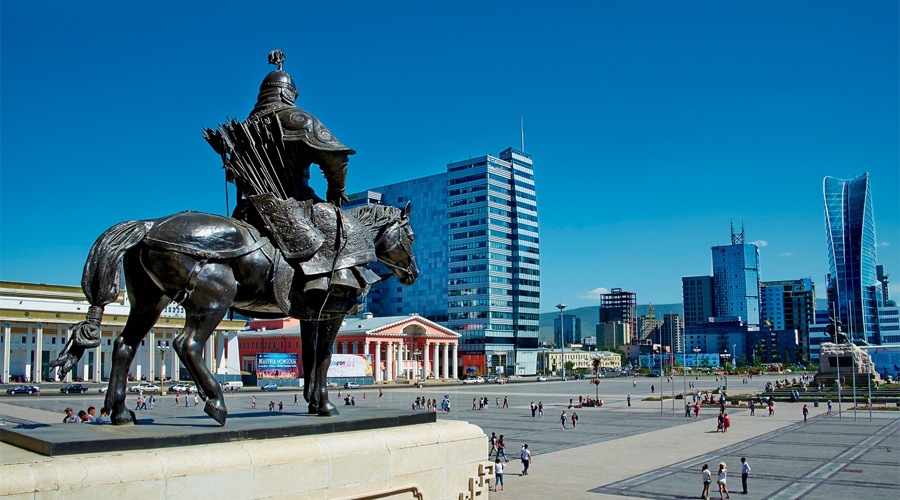
Mongolia marks centennial with a new course for change www.eastasiaforum.org
Mongolia celebrated the centenary of its first 1924 constitution in November 2024, which transformed the country from a religious monarchy into the People's Republic of Mongolia. Following parliamentary elections in June 2024, the country has launched ‘Parliament 2.0’, an agenda inspired by key ideals within Mongolia’s 1924 constitution and focusing on human rights, technological advancement and legal transparency. While the country has made significant democratic progress since its 1992 post-Soviet constitution, challenges remain, particularly regarding corruption and resource management. Despite these obstacles, Mongolia continues to strengthen its democratic institutions and seeks to expand its global diplomatic and trading relationships beyond its immediate neighbours.
With Mongolia having celebrated the centenary of its first constitution on 26 November 2024, the nation has pledged to modernise its governance and entrench democratic norms and practices during a time of geopolitical division in East Asia. Mongolia is considering how the original constitution’s ideals of sovereignty, equality and modernisation, which have provided the foundation for the country’s development in the past century, can be promoted in a contemporary setting.
Mongolia’s path to modern statehood began in 1924, when its first socialist constitution transformed the country from a religious monarchy into the People’s Republic of Mongolia. The constitution asserted sovereignty and established the government of Mongolia through the Great People’s Assembly, marking a groundbreaking shift toward unified leadership. Women gained equal rights, the state and religion were officially separated and education became free for all. Beyond changing who held power, this constitution advanced progressive ideas for its time.
The 1924 constitution laid the groundwork for Mongolia’s modernisation. Over the course of a century, Mongolia’s constitutional framework has evolved in response to shifting societal, political and economic conditions, with significant changes adopted in 1940, 1960 and 1992. The latter, adopted in the wake of the Soviet Union’s collapse and the country’s transition to democracy, declared Mongolia a sovereign, independent and democratic republic. This transformation aligned with the UN Universal Declaration of Human Rights, ensuring the protection of fundamental rights and freedoms.
Constitutional amendments in 1999, 2000, 2019 and 2022 have continued to shape the country’s democratic landscape. In 2023, further reforms increased the size of the State Great Khural, Mongolia’s unicameral parliament, from 76 to 126 members, of which nearly 40 per cent are elected through proportional representation. The changes passed with broad cross-party support, underscoring a national consensus on the importance of promoting unity and advancing democracy.
Following Mongolia’s parliamentary elections on 28 June 2024 and the formation of a new cross-party government, the 1924 constitution’s legacy continues to inspire reform efforts, including the ‘Parliament 2.0’ agenda unveiled on 2 October 2024 by the Speaker of Parliament Amarbayasgalan Dashzegve.
This agenda is based on three pillars, aiming to modernise Mongolia’s legislative process and governance structure. The first pillar focuses on integrating human rights into every legislative decision, while the second pillar aims to ensure that evolving advancements such as digital currencies and blockchain technology are reflected in legal and regulatory frameworks. The third pillar focuses on simplifying legal language to enhance transparency, reduce ambiguity and differentiate between matters best addressed by law and those that require specific regulatory guidance.
The significance of the ‘Parliament 2.0’ agenda lies in its recognition that democratic institutions must evolve to remain effective. Mongolia is seeking to demonstrate how a nation can adapt its governance framework to better meet contemporary challenges, while remaining true to core values.
But progress rarely takes a linear path. For example, there remains a need to tackle the long-term issue of corruption, as demonstrated in December 2022 when protestors took to the streets following allegations over corruption linked to the country’s coal trade with China.
Despite facing challenges, Mongolia remains committed to democracy and extending its diplomatic and trade links beyond its immediate neighbourhood. For example, a new draft law to improve freedom of the press has been welcomed as a positive sign by Reporters Without Borders, who say its passage would demonstrate a ‘commitment to press freedom’.
Mongolia’s challenge will be staying true to its democratic path while its economic success, at least in the short-term, remains closely reliant on trade with its nearest neighbours. While Mongolia still needs to entrench democratic norms at all levels of society, the new set of legislative and governance reforms is a promising sign as the country charts its course in the years ahead.
By: Jack Weatherford
Jack Weatherford is the DeWitt Wallace Professor of Anthropology at Macalester College, Minnesota.

E-Mart opens fifth store in Ulaanbaatar, Mongolia, targeting K-food craze www.biz.chosun.com
On the 20th, E-Mart announced that it will open its fifth franchise store, the Dragon Terminal location, in Ulaanbaatar, the capital of Mongolia. This comes 1 year and 3 months after the opening of the fourth store on Sept. 4 last year.
Ulaanbaatar is the capital of Mongolia. It is a place where Korean culture has spread so much that it is referred to as the 'Montan (Mongolia + Dongtan) new city,' where E-Mart operates four large discount store locations.
The newly opened fifth store is configured as a small-format store. E-Mart plans to focus on opening small-format stores in downtown Ulaanbaatar while implementing a two-track strategy of launching large stores like shopping malls in the outer new towns.
The fifth store is located on the first floor of the newly built shopping mall at Dragon Bus Terminal, which is the largest commercial area and a transportation hub in the west. Covering an area of 1,093 square meters (about 330 pyeong), the fifth store will increase the area for processed food to comprise about 70% of the total space and sell convenience products such as simple travel items and small-sized Korean snacks and drinks for terminal customers.
Reflecting the K-food craze, products from Korea have been displayed throughout the store. In particular, a deli and bakery featuring Korean-style menus such as gimbap, tteokbokki, and fried chicken have been emphasized.
The No Brand store is placed at the entrance as a shop-in-shop format. According to E-Mart, sales from the No Brand store in Mongolia from January to November this year increased by 24%. This decision reflects the high level of response.
Having entered the Mongolian market for nine years, E-Mart's sales continue to show significant growth each year. Last year, sales from E-Mart in Mongolia increased by 11% compared to the previous year. This year, E-Mart anticipates an even higher sales growth rate of about 19%.
Choi Jong-geun, head of E-Mart's overseas operations, noted that 'E-Mart aims to open more than 10 additional stores in Mongolia by 2030' and emphasized that 'it will establish itself as a leading discount store in Mongolia and spread K-retail.'
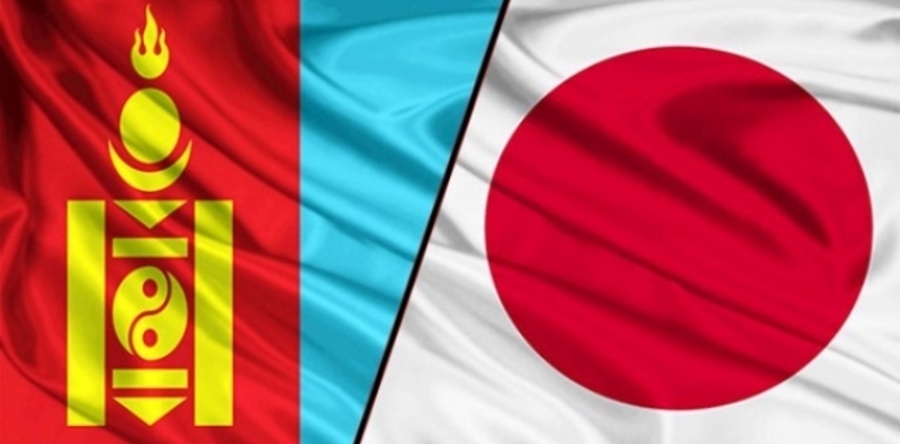
Japan and Mongolia Forge Historic Defense Pact Under Third Neighbor Strategy www.armyrecognition.com
On December 18, 2024, Japan and Mongolia formalized a historic agreement enabling the transfer of defense equipment and technology between the two nations. The accord was signed by Japan's Ambassador to Ulaanbaatar, Masaru Ogasawara, and Mongolia's Minister of Defense, Sandagiin Byambatsogt, highlighting both countries' commitment to strengthening defense cooperation. Japan's Ministry of Foreign Affairs clarified that the agreement would facilitate joint defense projects aimed at promoting international peace and stability while ensuring strict controls to prevent misuse or unauthorized transfer to third parties.
The agreement, signed on December 18, 2024, is expected to include the transfer of several advanced defense systems tailored to Mongolia’s strategic needs. Among these could be three-dimensional surveillance radars, akin to the modernized FPS-3 radar, which provides precise detection of ground and aerial targets. Similar systems have been provided by Japan to partners like the Philippines (under a 2016 agreement) and Vietnam (2021) and would be particularly effective for monitoring Mongolia’s extensive borders with Russia and China.
Reconnaissance drones equipped with optical and infrared sensors may also be part of the deal. Platforms like the Yamaha RMAX drone, used for tactical missions, would be well-suited for surveillance of remote or hard-to-access border areas. In 2019, Japan supplied similar systems to Indonesia under its maritime defense capacity-building program, showcasing its expertise in this domain.
The agreement might further include secure communication systems and command and control (C2) solutions similar to those provided to India after their 2015 accord. These technologies, critical for efficient military coordination, would enhance Mongolia's ability to address local threats while fostering interoperability with regional partners. Additionally, cybersecurity tools, like those shared with Singapore in 2018, could be included to safeguard Mongolia’s critical military infrastructure from potential cyberattacks.
Specialized military vehicles, such as the Toyota Mega Cruiser, renowned for their mobility and durability in challenging environments, could also be part of the package. Japan shared such equipment with the Philippines in 2020 to improve rapid response capabilities. Through this agreement with Mongolia, Japan continues to leverage its regional defense strategy, strengthening bilateral alliances since it relaxed its restrictions on military equipment exports in 2014. The agreement is set to take effect in 2025, accompanied by training and maintenance programs to ensure the operational readiness of Mongolia’s armed forces.
Military relations between Japan and Mongolia have intensified in recent years, reflecting a shared desire to enhance cooperation in defense and security. This trend aligns with Mongolia’s "third neighbor" strategy, aimed at diversifying partnerships beyond its two major neighbors, Russia and China.
Furthermore, Mongolia has been actively participating in NATO partnership programs since 2012, particularly through the Defense Education Enhancement Program (DEEP), which aims to modernize Mongolia’s military training system and improve interoperability with allied forces.
Mongolia’s armed forces consist of approximately 10,000 active-duty personnel and 137,000 reservists, primarily organized into land forces with a limited air force component. The country allocates about 1.4% of its GDP to defense. Since the 2000s, Mongolia has actively contributed to international peacekeeping missions, including operations in Afghanistan, Kosovo, and Africa, bolstering its international presence and commitment to global security.
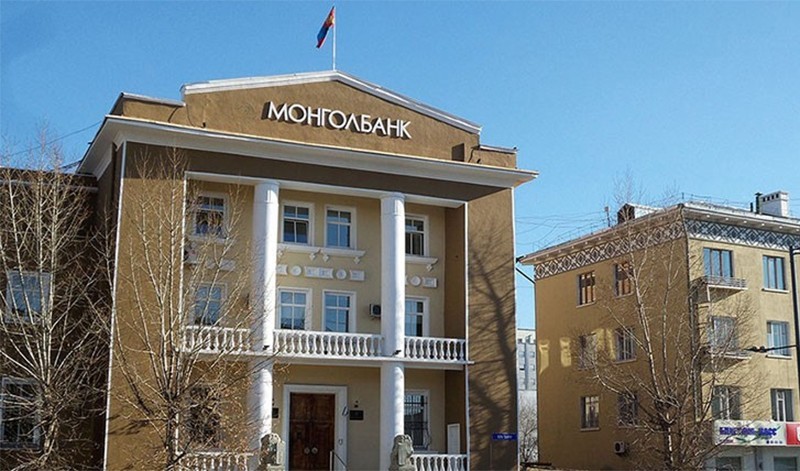
Central bank lowers economic growth forecast to 5.2% www.ubpost.mn
On December 18, Governor of Mongol Bank B.Lkhagvasuren provided a comprehensive update on the country’s banking sector, economic performance and the financial outlook for 2024. Despite challenges posed by global geopolitical tensions and slower-than-expected growth in key sectors, the governor highlighted a positive trajectory for the country’s economy, supported by strong performance in the banking sector.
Governor B.Lkhagvasuren noted that the easing of monetary policies in major economies such as the USA and Europe in 2024 has been a boon for Mongolia’s foreign economy. However, he cautioned that external risks remain high, with geopolitical tensions contributing to ongoing uncertainty in the global environment.
Additionally, the Chinese economy, a key trading partner for Mongolia, is showing signs of weakness, increasing concerns about a potential drop in external demand, particularly for coal exports. As a result, there is growing apprehension regarding the impact of falling coal prices on the Mongolian economy.
Inflation in Mongolia showed a slight uptick in recent months, rising to 8.1 percent in November, compared to seven percent in October. A significant driver of this increase was the rise in electricity prices, which is expected to account for nearly two percentage points of inflation in November, a sharp rise from just 0.1 percentage points in October.
In terms of economic growth, Mongolia’s economy expanded by 3.9 percent in the third quarter of 2024, falling short of expectations. The slowdown was attributed to weaker-than-expected performance in key industries such as copper and gold mining. Given this performance, Mongol Bank has revised its growth forecast for 2024 to 5.2 percent, down from earlier predictions.
Despite this, the medium-term outlook remains positive, with economic growth expected to pick up to seven to eight percent in 2025. Key drivers of this growth include the gradual recovery from this year’s severe winter conditions (dzud), increased production at the Oyu Tolgoi copper mine, and a weaker fiscal outlook.
The governor confirmed that the central bank would maintain its policy interest rate at 10 percent to avoid excessive tightening of credit conditions and ensure stable economic growth in the medium term. Despite inflation exceeding the target range for 2024, the bank expects it to stabilize within the target range by early 2026.
To further support financial stability, Mongol Bank has decided to raise the mandatory reserve ratio for commercial banks. Starting in 2024, banks will be required to hold 11 percent of their reserves in Mongolian tugrik and 16 percent in foreign currency, an increase of one percentage point for each. This measure aims to curb the accumulation of risks in the banking sector and ensure its long-term stability.
B.Lkhagvasuren emphasized the robust health of Mongolia’s 12 commercial banks, which are showing solid indicators in terms of capital, liquidity and lending capacity. These banks are playing a critical role in supporting the economy through increased credit availability, even as Mongol Bank continues to monitor inflation and economic developments closely.
In recent months, there has been a notable shift in the banking sector’s lending focus, with consumer loans now on par with business loans, accounting for a 50:50 ratio. Loans secured by salaries and pensions are also increasing, aligned with rising government expenditures in these areas.
Governor B.Lkhagvasuren concluded that the central bank will remain agile, adjusting its policies as needed based on changes in both the domestic and global economic environments.
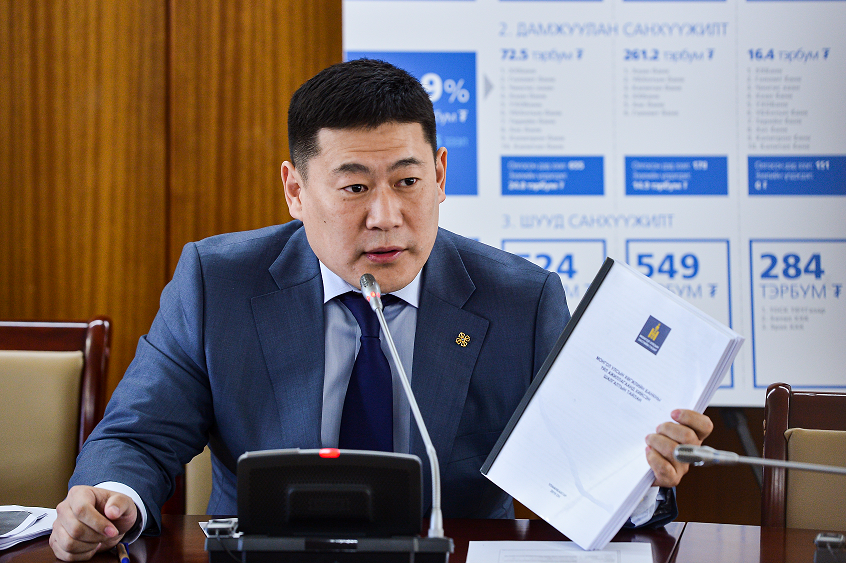
L. Oyun-Erdene: Every Citizen Will Receive 350,000 MNT in Dividends www.gogo.mn
A special meeting of the Government was held today, December 20, 2024. Following the meeting, the Prime Minister delivered an announcement to the public, outlining the key decisions.
Prime Minister L. Oyun-Erdene marked the 100th day since the Government's action plan was approved. As of December 20, 2024, Mongolia has achieved a historic milestone by exporting a record 81.8 million tons of coal.
The state budget for 2024 has generated a surplus of 1 trillion MNT, of which 50% will be allocated to the Stabilization Fund. The National Wealth Fund has accumulated a tangible reserve of 4 trillion MNT, opening up opportunities to invest this capital for growth.
A total of 495 billion MNT has been deposited in the National Wealth Fund, translating to savings of 135,000 MNT in each citizen's account. By law, these funds are designated for use in the healthcare and education sectors. Citizens can check their savings via the e-Mongolia platform.
The Erdenes Tavan Tolgoi company has reported profitable operations. As of today, every citizen is eligible to receive 350,000 MNT in dividends. Unlike previous years, when dividends were distributed in March or April, the Government has decided to issue them during the winter months, considering current needs.
Previously, payouts of around 100,000 MNT had minimal impact on inflation. However, larger payouts of 350,000 to 500,000 MNT carry significant inflationary risks. To mitigate this, the dividend will be distributed in three installments. Considering issues like air pollution, the first installment will match the amount already saved in the Wealth Fund, which is 135,000 MNT.
In accordance with the 2024 financial report, an additional 135,000 MNT will be paid to each citizen as dividends in January or February 2025, adhering to the law. These funds will not be used for any other purpose.
Secondly, the Prime Minister acknowledged that Ulaanbaatar’s air pollution and traffic congestion have reached a critical level. Consequently, a heightened state of readiness has been declared. To urgently address these pressing issues, a special legal framework is required in collaboration with Parliament. This framework will be submitted to Parliament for discussion starting next Monday.
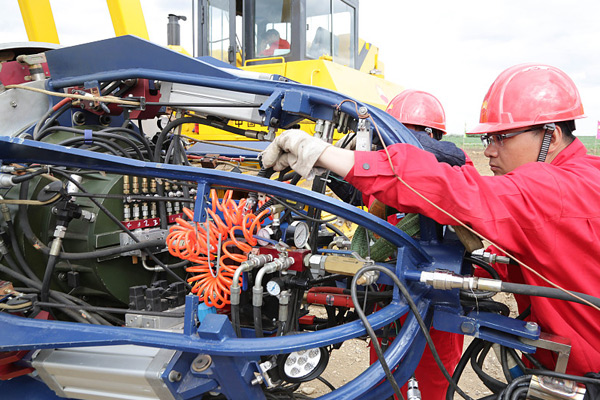
The bill to eliminate the quota for foreign workers in Mongolia has been submitted www.gogo.mn
Members of Parliament P. Sainzorigt and N. Batsumberel presented a draft law to the Speaker of the Mongolian Parliament, D. Amarbaysgalan, which proposes the removal of restrictions on the number and percentage of foreign workers in Mongolia and the exemption of employers from job placement fees for foreign workers.
The draft law stipulates that the number and percentage of foreign workers in Mongolia will not be set until December 31, 2026, except for the mining and oil extraction sectors. During this period, employers will also be exempt from the job placement fees for foreign workers.
Between 1993 and 2006, Mongolia’s birth rate was significantly low, resulting in a shortage of domestic labor, a situation that is projected to continue until 2030. In light of this, the bill was introduced, emphasizing the need to address the labor shortage.
According to the annex to the resolution of the Mongolian Parliament in 2021 (Resolution No. 106), the “Revival of State Productivity” under the New Revival Policy includes removing limits on the number of foreign workers in the private sector, reducing job placement fees by 50%, and enabling the hiring of foreign labor to fill gaps that cannot be covered by the domestic workforce. This measure aims to address labor shortages, particularly for small, medium, and micro businesses, and halt the worsening shortage of labor in the country, as stated by MP P. Sainzorigt, as reported by the Parliament’s press service.
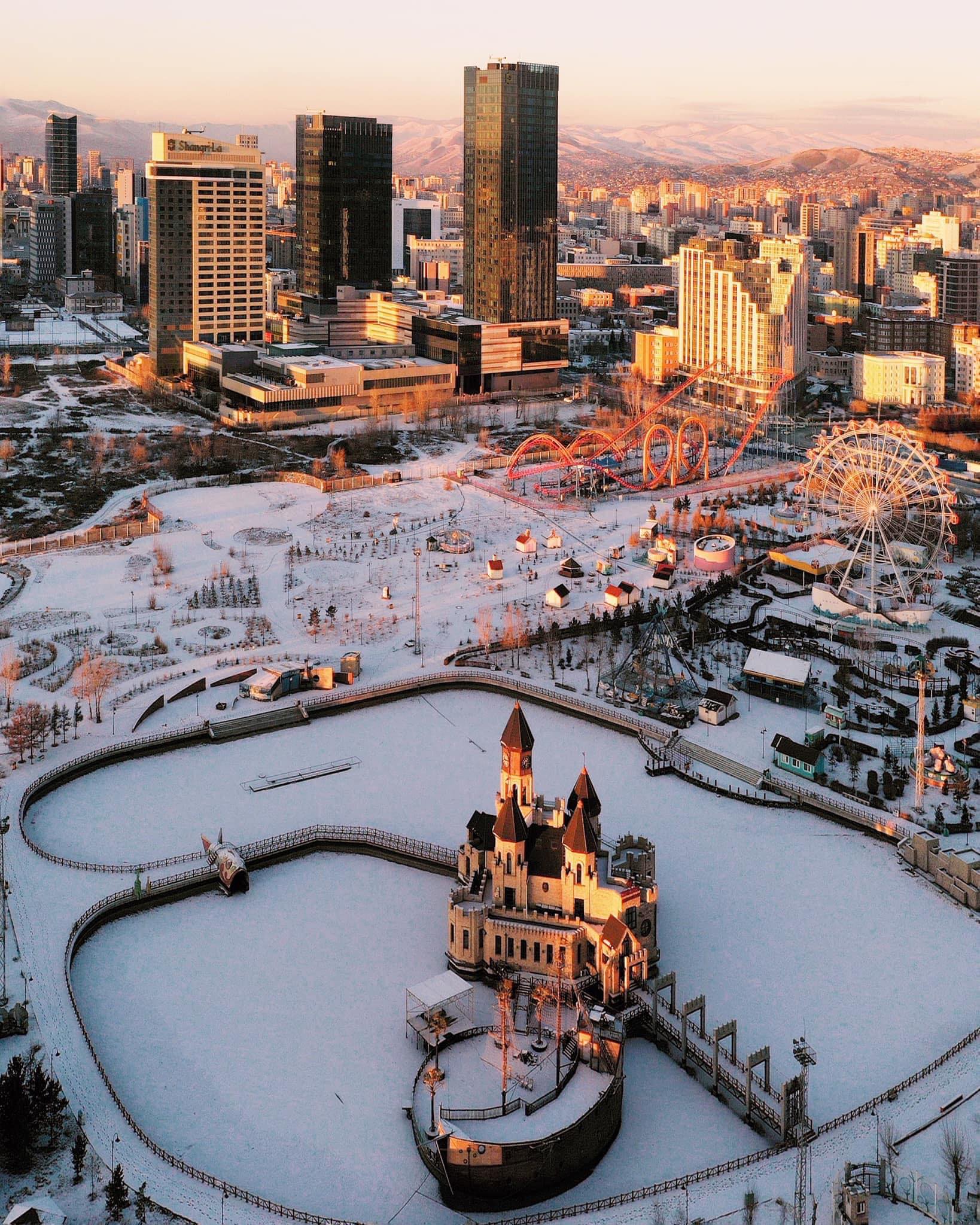
The Second National Oncology Center to Be Constructed in Ulaanbaatar www.montsame.mn
On December 17, 2024, President of Mongolia Khurelsukh Ukhnaa issued a Directive on Establishing a Working Group in charge of Supporting the Construction of the Second National Oncology Center of Mongolia.
The Working Group consists of Minister of Finance Javkhlan Bold, Minister of Health Munkhsaikhan Togtmol, Members of Parliament Chinburen Jigjidsuren, Altanshagai Narantsetseg, and Munkhbayasgalan Luvsanbyambaa, Deputy Chief Cabinet Secretary Byambasuren Urgamal, State-Secretary of the Ministry of Economy and Development Batkhuu Idesh, Secretary of the Nuclear Energy Commission and Head of the Executive Office Manlaijav Gun-Aajav, Rector of the Mongolian National University of Medical Sciences Damdindorj Boldbaatar, and Director-General of the National Oncology Center Erdenekhuu Nansalmaa. Senior Advisor to the President Khurelbaatar Nyamdavaa was appointed as the Head of the Working Group.
Members of the Working Group led by Senior Advisor Khurelbaatar held a briefing and provided details on the initiative. The Working Group is responsible for providing professional and methodological support for the construction of the Second National Oncology Center, which will serve as a comprehensive facility for cancer prevention, diagnosis, treatment, research, and training. The Working Group will also work towards addressing the causes and conditions that lead to cancer, strengthening interdisciplinary responsibility and accountability, and ensuring the delivery of high-quality, accessible services that meet international standards.
The Second National Oncology Center will be located on 12 hectares of land near the “Nairamdal” International Children’s Camp, the 34th khoroo of Songinokhairkhan district of Ulaanbaatar. The facility, covering 95,000 square meters, is projected to be completed and operational within 4-5 years. Specifically, the necessary funding for its infrastructure, which is equivalent to MNT 38 trillion, has been included in the 2025 State Budget of Mongolia.
Cancer-related incidence, mortality, and quality of medical services have become pressing issues in Mongolia. The mortality rate from cancer in Mongolia is 24 percent, which is considerably higher than the global average of 17 percent. Additionally, about 70 percent of cancer patients are diagnosed at later stages of the disease.
It is crucial to improve the early detection, reduce cancer-related deaths, and ensure that citizens can access medical services within their local areas. To improve cancer treatment services in the aimags, funding for the necessary medical equipment and infrastructure has been included in the local budgets.

Green Bond Issued for Waste Recycling www.montsame.mn
TJTB LLC, a company listed on the Mongolian Stock Exchange, has introduced the “Green Recycle” Green Bond for public offering.
The primary market trading orders for the second tranche of the green bond will be accepted through the IPO system of the Mongolian Stock Exchange on December 20-26, 2024.
Bond Overview:
Name: "Green Recycle" Bond
Number of Bonds: Up to 40,000
Nominal Price: USD 100
Total Value: USD 4,000,000 (Four million US dollars)
Annual Interest Rate: 10.0%
Bond Term: 36 months
Interest Payment Frequency: Semi-annually
Repayment Method: At maturity
Custody and Settlement: Central Securities Depository
By issuing this bond, the company aims to raise funds for its "TML Plastic" Recycle Plant, which specializes in recycling plastic bottles and products.
- «
- 1
- 2
- 3
- 4
- 5
- 6
- 7
- 8
- 9
- 10
- 11
- 12
- 13
- 14
- 15
- 16
- 17
- 18
- 19
- 20
- 21
- 22
- 23
- 24
- 25
- 26
- 27
- 28
- 29
- 30
- 31
- 32
- 33
- 34
- 35
- 36
- 37
- 38
- 39
- 40
- 41
- 42
- 43
- 44
- 45
- 46
- 47
- 48
- 49
- 50
- 51
- 52
- 53
- 54
- 55
- 56
- 57
- 58
- 59
- 60
- 61
- 62
- 63
- 64
- 65
- 66
- 67
- 68
- 69
- 70
- 71
- 72
- 73
- 74
- 75
- 76
- 77
- 78
- 79
- 80
- 81
- 82
- 83
- 84
- 85
- 86
- 87
- 88
- 89
- 90
- 91
- 92
- 93
- 94
- 95
- 96
- 97
- 98
- 99
- 100
- 101
- 102
- 103
- 104
- 105
- 106
- 107
- 108
- 109
- 110
- 111
- 112
- 113
- 114
- 115
- 116
- 117
- 118
- 119
- 120
- 121
- 122
- 123
- 124
- 125
- 126
- 127
- 128
- 129
- 130
- 131
- 132
- 133
- 134
- 135
- 136
- 137
- 138
- 139
- 140
- 141
- 142
- 143
- 144
- 145
- 146
- 147
- 148
- 149
- 150
- 151
- 152
- 153
- 154
- 155
- 156
- 157
- 158
- 159
- 160
- 161
- 162
- 163
- 164
- 165
- 166
- 167
- 168
- 169
- 170
- 171
- 172
- 173
- 174
- 175
- 176
- 177
- 178
- 179
- 180
- 181
- 182
- 183
- 184
- 185
- 186
- 187
- 188
- 189
- 190
- 191
- 192
- 193
- 194
- 195
- 196
- 197
- 198
- 199
- 200
- 201
- 202
- 203
- 204
- 205
- 206
- 207
- 208
- 209
- 210
- 211
- 212
- 213
- 214
- 215
- 216
- 217
- 218
- 219
- 220
- 221
- 222
- 223
- 224
- 225
- 226
- 227
- 228
- 229
- 230
- 231
- 232
- 233
- 234
- 235
- 236
- 237
- 238
- 239
- 240
- 241
- 242
- 243
- 244
- 245
- 246
- 247
- 248
- 249
- 250
- 251
- 252
- 253
- 254
- 255
- 256
- 257
- 258
- 259
- 260
- 261
- 262
- 263
- 264
- 265
- 266
- 267
- 268
- 269
- 270
- 271
- 272
- 273
- 274
- 275
- 276
- 277
- 278
- 279
- 280
- 281
- 282
- 283
- 284
- 285
- 286
- 287
- 288
- 289
- 290
- 291
- 292
- 293
- 294
- 295
- 296
- 297
- 298
- 299
- 300
- 301
- 302
- 303
- 304
- 305
- 306
- 307
- 308
- 309
- 310
- 311
- 312
- 313
- 314
- 315
- 316
- 317
- 318
- 319
- 320
- 321
- 322
- 323
- 324
- 325
- 326
- 327
- 328
- 329
- 330
- 331
- 332
- 333
- 334
- 335
- 336
- 337
- 338
- 339
- 340
- 341
- 342
- 343
- 344
- 345
- 346
- 347
- 348
- 349
- 350
- 351
- 352
- 353
- 354
- 355
- 356
- 357
- 358
- 359
- 360
- 361
- 362
- 363
- 364
- 365
- 366
- 367
- 368
- 369
- 370
- 371
- 372
- 373
- 374
- 375
- 376
- 377
- 378
- 379
- 380
- 381
- 382
- 383
- 384
- 385
- 386
- 387
- 388
- 389
- 390
- 391
- 392
- 393
- 394
- 395
- 396
- 397
- 398
- 399
- 400
- 401
- 402
- 403
- 404
- 405
- 406
- 407
- 408
- 409
- 410
- 411
- 412
- 413
- 414
- 415
- 416
- 417
- 418
- 419
- 420
- 421
- 422
- 423
- 424
- 425
- 426
- 427
- 428
- 429
- 430
- 431
- 432
- 433
- 434
- 435
- 436
- 437
- 438
- 439
- 440
- 441
- 442
- 443
- 444
- 445
- 446
- 447
- 448
- 449
- 450
- 451
- 452
- 453
- 454
- 455
- 456
- 457
- 458
- 459
- 460
- 461
- 462
- 463
- 464
- 465
- 466
- 467
- 468
- 469
- 470
- 471
- 472
- 473
- 474
- 475
- 476
- 477
- 478
- 479
- 480
- 481
- 482
- 483
- 484
- 485
- 486
- 487
- 488
- 489
- 490
- 491
- 492
- 493
- 494
- 495
- 496
- 497
- 498
- 499
- 500
- 501
- 502
- 503
- 504
- 505
- 506
- 507
- 508
- 509
- 510
- 511
- 512
- 513
- 514
- 515
- 516
- 517
- 518
- 519
- 520
- 521
- 522
- 523
- 524
- 525
- 526
- 527
- 528
- 529
- 530
- 531
- 532
- 533
- 534
- 535
- 536
- 537
- 538
- 539
- 540
- 541
- 542
- 543
- 544
- 545
- 546
- 547
- 548
- 549
- 550
- 551
- 552
- 553
- 554
- 555
- 556
- 557
- 558
- 559
- 560
- 561
- 562
- 563
- 564
- 565
- 566
- 567
- 568
- 569
- 570
- 571
- 572
- 573
- 574
- 575
- 576
- 577
- 578
- 579
- 580
- 581
- 582
- 583
- 584
- 585
- 586
- 587
- 588
- 589
- 590
- 591
- 592
- 593
- 594
- 595
- 596
- 597
- 598
- 599
- 600
- 601
- 602
- 603
- 604
- 605
- 606
- 607
- 608
- 609
- 610
- 611
- 612
- 613
- 614
- 615
- 616
- 617
- 618
- 619
- 620
- 621
- 622
- 623
- 624
- 625
- 626
- 627
- 628
- 629
- 630
- 631
- 632
- 633
- 634
- 635
- 636
- 637
- 638
- 639
- 640
- 641
- 642
- 643
- 644
- 645
- 646
- 647
- 648
- 649
- 650
- 651
- 652
- 653
- 654
- 655
- 656
- 657
- 658
- 659
- 660
- 661
- 662
- 663
- 664
- 665
- 666
- 667
- 668
- 669
- 670
- 671
- 672
- 673
- 674
- 675
- 676
- 677
- 678
- 679
- 680
- 681
- 682
- 683
- 684
- 685
- 686
- 687
- 688
- 689
- 690
- 691
- 692
- 693
- 694
- 695
- 696
- 697
- 698
- 699
- 700
- 701
- 702
- 703
- 704
- 705
- 706
- 707
- 708
- 709
- 710
- 711
- 712
- 713
- 714
- 715
- 716
- 717
- 718
- 719
- 720
- 721
- 722
- 723
- 724
- 725
- 726
- 727
- 728
- 729
- 730
- 731
- 732
- 733
- 734
- 735
- 736
- 737
- 738
- 739
- 740
- 741
- 742
- 743
- 744
- 745
- 746
- 747
- 748
- 749
- 750
- 751
- 752
- 753
- 754
- 755
- 756
- 757
- 758
- 759
- 760
- 761
- 762
- 763
- 764
- 765
- 766
- 767
- 768
- 769
- 770
- 771
- 772
- 773
- 774
- 775
- 776
- 777
- 778
- 779
- 780
- 781
- 782
- 783
- 784
- 785
- 786
- 787
- 788
- 789
- 790
- 791
- 792
- 793
- 794
- 795
- 796
- 797
- 798
- 799
- 800
- 801
- 802
- 803
- 804
- 805
- 806
- 807
- 808
- 809
- 810
- 811
- 812
- 813
- 814
- 815
- 816
- 817
- 818
- 819
- 820
- 821
- 822
- 823
- 824
- 825
- 826
- 827
- 828
- 829
- 830
- 831
- 832
- 833
- 834
- 835
- 836
- 837
- 838
- 839
- 840
- 841
- 842
- 843
- 844
- 845
- 846
- 847
- 848
- 849
- 850
- 851
- 852
- 853
- 854
- 855
- 856
- 857
- 858
- 859
- 860
- 861
- 862
- 863
- 864
- 865
- 866
- 867
- 868
- 869
- 870
- 871
- 872
- 873
- 874
- 875
- 876
- 877
- 878
- 879
- 880
- 881
- 882
- 883
- 884
- 885
- 886
- 887
- 888
- 889
- 890
- 891
- 892
- 893
- 894
- 895
- 896
- 897
- 898
- 899
- 900
- 901
- 902
- 903
- 904
- 905
- 906
- 907
- 908
- 909
- 910
- 911
- 912
- 913
- 914
- 915
- 916
- 917
- 918
- 919
- 920
- 921
- 922
- 923
- 924
- 925
- 926
- 927
- 928
- 929
- 930
- 931
- 932
- 933
- 934
- 935
- 936
- 937
- 938
- 939
- 940
- 941
- 942
- 943
- 944
- 945
- 946
- 947
- 948
- 949
- 950
- 951
- 952
- 953
- 954
- 955
- 956
- 957
- 958
- 959
- 960
- 961
- 962
- 963
- 964
- 965
- 966
- 967
- 968
- 969
- 970
- 971
- 972
- 973
- 974
- 975
- 976
- 977
- 978
- 979
- 980
- 981
- 982
- 983
- 984
- 985
- 986
- 987
- 988
- 989
- 990
- 991
- 992
- 993
- 994
- 995
- 996
- 997
- 998
- 999
- 1000
- 1001
- 1002
- 1003
- 1004
- 1005
- 1006
- 1007
- 1008
- 1009
- 1010
- 1011
- 1012
- 1013
- 1014
- 1015
- 1016
- 1017
- 1018
- 1019
- 1020
- 1021
- 1022
- 1023
- 1024
- 1025
- 1026
- 1027
- 1028
- 1029
- 1030
- 1031
- 1032
- 1033
- 1034
- 1035
- 1036
- 1037
- 1038
- 1039
- 1040
- 1041
- 1042
- 1043
- 1044
- 1045
- 1046
- 1047
- 1048
- 1049
- 1050
- 1051
- 1052
- 1053
- 1054
- 1055
- 1056
- 1057
- 1058
- 1059
- 1060
- 1061
- 1062
- 1063
- 1064
- 1065
- 1066
- 1067
- 1068
- 1069
- 1070
- 1071
- 1072
- 1073
- 1074
- 1075
- 1076
- 1077
- 1078
- 1079
- 1080
- 1081
- 1082
- 1083
- 1084
- 1085
- 1086
- 1087
- 1088
- 1089
- 1090
- 1091
- 1092
- 1093
- 1094
- 1095
- 1096
- 1097
- 1098
- 1099
- 1100
- 1101
- 1102
- 1103
- 1104
- 1105
- 1106
- 1107
- 1108
- 1109
- 1110
- 1111
- 1112
- 1113
- 1114
- 1115
- 1116
- 1117
- 1118
- 1119
- 1120
- 1121
- 1122
- 1123
- 1124
- 1125
- 1126
- 1127
- 1128
- 1129
- 1130
- 1131
- 1132
- 1133
- 1134
- 1135
- 1136
- 1137
- 1138
- 1139
- 1140
- 1141
- 1142
- 1143
- 1144
- 1145
- 1146
- 1147
- 1148
- 1149
- 1150
- 1151
- 1152
- 1153
- 1154
- 1155
- 1156
- 1157
- 1158
- 1159
- 1160
- 1161
- 1162
- 1163
- 1164
- 1165
- 1166
- 1167
- 1168
- 1169
- 1170
- 1171
- 1172
- 1173
- 1174
- 1175
- 1176
- 1177
- 1178
- 1179
- 1180
- 1181
- 1182
- 1183
- 1184
- 1185
- 1186
- 1187
- 1188
- 1189
- 1190
- 1191
- 1192
- 1193
- 1194
- 1195
- 1196
- 1197
- 1198
- 1199
- 1200
- 1201
- 1202
- 1203
- 1204
- 1205
- 1206
- 1207
- 1208
- 1209
- 1210
- 1211
- 1212
- 1213
- 1214
- 1215
- 1216
- 1217
- 1218
- 1219
- 1220
- 1221
- 1222
- 1223
- 1224
- 1225
- 1226
- 1227
- 1228
- 1229
- 1230
- 1231
- 1232
- 1233
- 1234
- 1235
- 1236
- 1237
- 1238
- 1239
- 1240
- 1241
- 1242
- 1243
- 1244
- 1245
- 1246
- 1247
- 1248
- 1249
- 1250
- 1251
- 1252
- 1253
- 1254
- 1255
- 1256
- 1257
- 1258
- 1259
- 1260
- 1261
- 1262
- 1263
- 1264
- 1265
- 1266
- 1267
- 1268
- 1269
- 1270
- 1271
- 1272
- 1273
- 1274
- 1275
- 1276
- 1277
- 1278
- 1279
- 1280
- 1281
- 1282
- 1283
- 1284
- 1285
- 1286
- 1287
- 1288
- 1289
- 1290
- 1291
- 1292
- 1293
- 1294
- 1295
- 1296
- 1297
- 1298
- 1299
- 1300
- 1301
- 1302
- 1303
- 1304
- 1305
- 1306
- 1307
- 1308
- 1309
- 1310
- 1311
- 1312
- 1313
- 1314
- 1315
- 1316
- 1317
- 1318
- 1319
- 1320
- 1321
- 1322
- 1323
- 1324
- 1325
- 1326
- 1327
- 1328
- 1329
- 1330
- 1331
- 1332
- 1333
- 1334
- 1335
- 1336
- 1337
- 1338
- 1339
- 1340
- 1341
- 1342
- 1343
- 1344
- 1345
- 1346
- 1347
- 1348
- 1349
- 1350
- 1351
- 1352
- 1353
- 1354
- 1355
- 1356
- 1357
- 1358
- 1359
- 1360
- 1361
- 1362
- 1363
- 1364
- 1365
- 1366
- 1367
- 1368
- 1369
- 1370
- 1371
- 1372
- 1373
- 1374
- 1375
- 1376
- 1377
- 1378
- 1379
- 1380
- 1381
- 1382
- 1383
- 1384
- 1385
- 1386
- 1387
- 1388
- 1389
- 1390
- 1391
- 1392
- 1393
- 1394
- 1395
- 1396
- 1397
- 1398
- 1399
- 1400
- 1401
- 1402
- 1403
- 1404
- 1405
- 1406
- 1407
- 1408
- 1409
- 1410
- 1411
- 1412
- 1413
- 1414
- 1415
- 1416
- 1417
- 1418
- 1419
- 1420
- 1421
- 1422
- 1423
- 1424
- 1425
- 1426
- 1427
- 1428
- 1429
- 1430
- 1431
- 1432
- 1433
- 1434
- 1435
- 1436
- 1437
- 1438
- 1439
- 1440
- 1441
- 1442
- 1443
- 1444
- 1445
- 1446
- 1447
- 1448
- 1449
- 1450
- 1451
- 1452
- 1453
- 1454
- 1455
- 1456
- 1457
- 1458
- 1459
- 1460
- 1461
- 1462
- 1463
- 1464
- 1465
- 1466
- 1467
- 1468
- 1469
- 1470
- 1471
- 1472
- 1473
- 1474
- 1475
- 1476
- 1477
- 1478
- 1479
- 1480
- 1481
- 1482
- 1483
- 1484
- 1485
- 1486
- 1487
- 1488
- 1489
- 1490
- 1491
- 1492
- 1493
- 1494
- 1495
- 1496
- 1497
- 1498
- 1499
- 1500
- 1501
- 1502
- 1503
- 1504
- 1505
- 1506
- 1507
- 1508
- 1509
- 1510
- 1511
- 1512
- 1513
- 1514
- 1515
- 1516
- 1517
- 1518
- 1519
- 1520
- 1521
- 1522
- 1523
- 1524
- 1525
- 1526
- 1527
- 1528
- 1529
- 1530
- 1531
- 1532
- 1533
- 1534
- 1535
- 1536
- 1537
- 1538
- 1539
- 1540
- 1541
- 1542
- 1543
- 1544
- 1545
- 1546
- 1547
- 1548
- 1549
- 1550
- 1551
- 1552
- 1553
- 1554
- 1555
- 1556
- 1557
- 1558
- 1559
- 1560
- 1561
- 1562
- 1563
- 1564
- 1565
- 1566
- 1567
- 1568
- 1569
- 1570
- 1571
- 1572
- 1573
- 1574
- 1575
- 1576
- 1577
- 1578
- 1579
- 1580
- 1581
- 1582
- 1583
- 1584
- 1585
- 1586
- 1587
- 1588
- 1589
- 1590
- 1591
- 1592
- 1593
- 1594
- 1595
- 1596
- 1597
- 1598
- 1599
- 1600
- 1601
- 1602
- 1603
- 1604
- 1605
- 1606
- 1607
- 1608
- 1609
- 1610
- 1611
- 1612
- 1613
- 1614
- 1615
- 1616
- 1617
- 1618
- 1619
- 1620
- 1621
- 1622
- 1623
- 1624
- 1625
- 1626
- 1627
- 1628
- 1629
- 1630
- 1631
- 1632
- 1633
- 1634
- 1635
- 1636
- 1637
- 1638
- 1639
- 1640
- 1641
- 1642
- 1643
- 1644
- 1645
- 1646
- 1647
- 1648
- 1649
- 1650
- 1651
- 1652
- 1653
- 1654
- 1655
- 1656
- 1657
- 1658
- 1659
- 1660
- 1661
- 1662
- 1663
- 1664
- 1665
- 1666
- 1667
- 1668
- 1669
- 1670
- 1671
- 1672
- 1673
- 1674
- 1675
- 1676
- 1677
- 1678
- 1679
- 1680
- 1681
- 1682
- 1683
- 1684
- 1685
- 1686
- 1687
- 1688
- 1689
- 1690
- 1691
- 1692
- 1693
- 1694
- »






